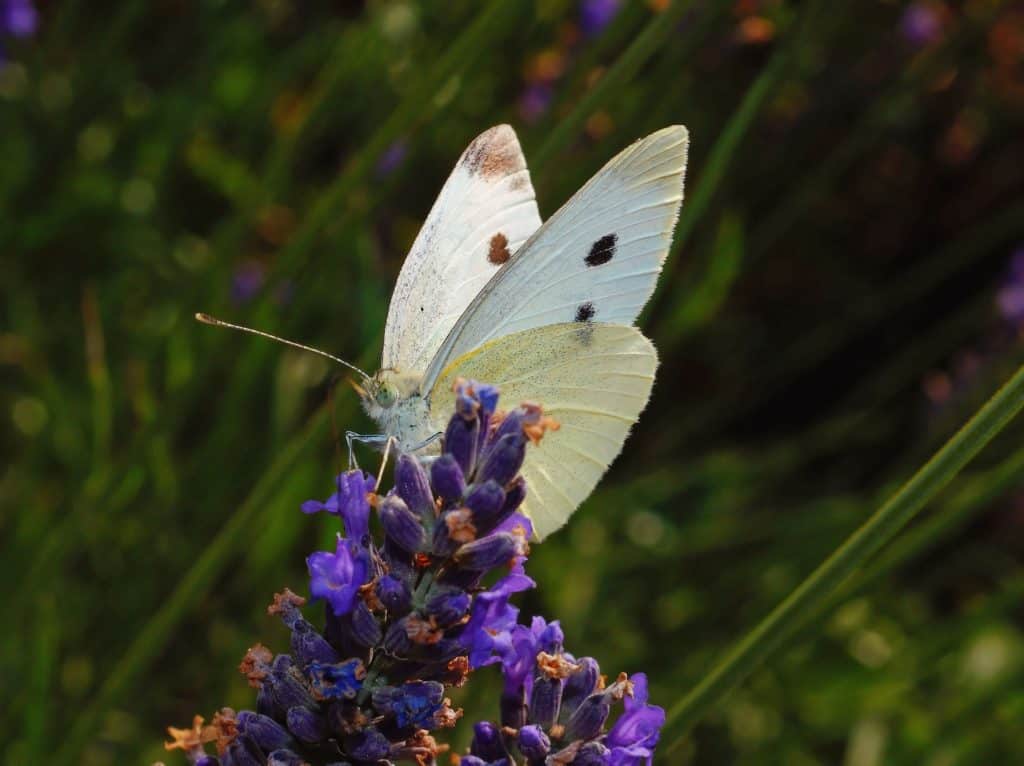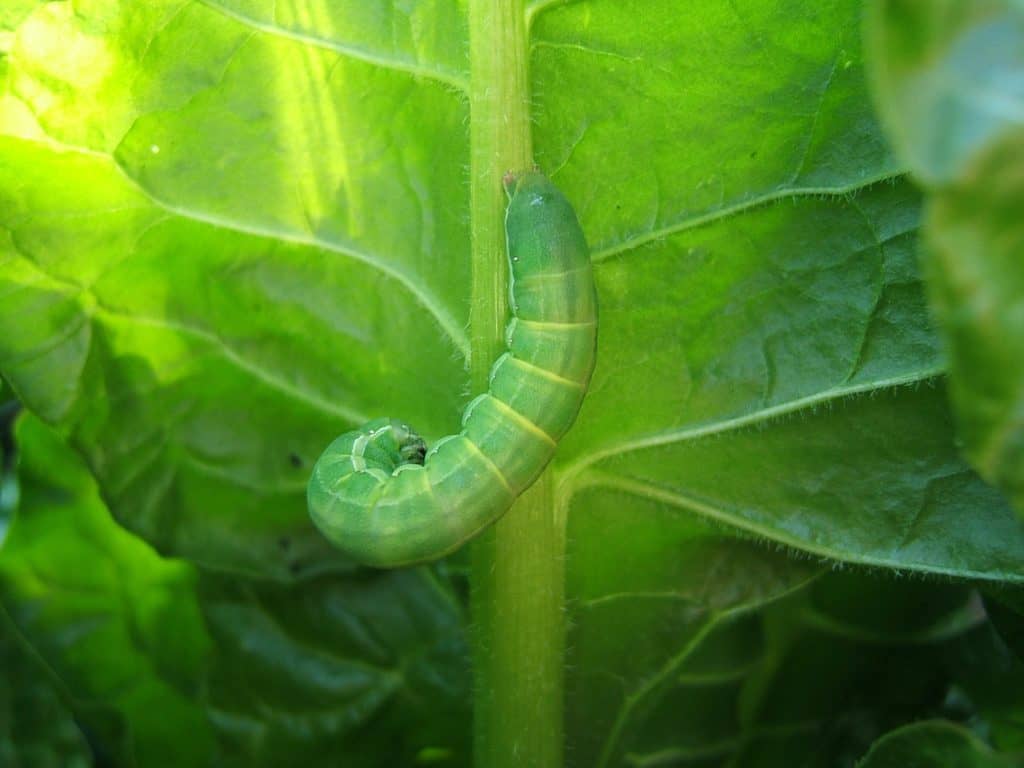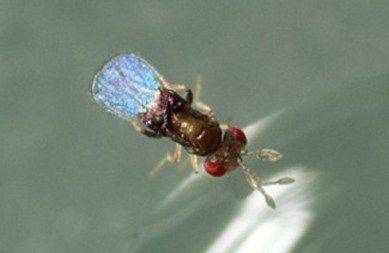Anyone who has raised cabbage, broccoli, cauliflower, bok choy, rutabaga, kohlrabi, kale, turnips, or mustard plants (all memebers of the Brassica family) has no doubt encountered the cabbage worm. Sadly, by the time many may notice the presence of cabbage worms in their garden, the pests may have already decimated the majority of the crop.
Habits and Growth
The adult female cabbage worm butterfly will emerge in early spring after over wintering as green pupae. The cabbage worm itself, hatches from the egg (usually found on the undersides of leaves) of the cabbage worm butterfly after an incubation of only 1-2 weeks. Though the cabbage worm butterfly is native to Europe and Asia, it has become proliferate in the United States, and can be found abundantly in all 50 states. Typically, an adult female will lay up to 200 minuscule yellow eggs on a host plant at a time.

Once the larvae hatch, they feed on cruciferous plants, chewing up leaves or the heads of cabbages. These little pests, if not deterred, will eat away at the bases and leaves of cabbage, cauliflower, or broccoli with vigor over a 15 day period, leaving nothing but the foliage stems. After feeding for 15 days, the worm will pupate for 10 days before emerging as a new butterfly.
The best way to prevent cabbage worm damage in your garden is to prevent the cabbage white butterflies from laying their eggs in the first place. Once the eggs have been laid, they are difficult to spot, and are often overlooked because they are typically found on the underside of leaves. Often, gardeners do not even know that they have a cabbage worm problem until their entire crop has been damaged.
Don’t despair if you haven’t taken measures to dissuade the cabbage butterfly, and have already planted your garden, there is still plenty you can do to protect your crop. This article will first discuss cabbage worm prevention, and second, treatment or management of cabbage worms once you find them in your garden.
Identification
The white cabbage butterfly is easily identifiable by their white wings and black dots. Male cabbage butterflies have one black spot, while females have two black spots. Adult butterflies have a wing span between 1-2 inches. Though you might enjoy seeing butterflies in your garden, if you see one of these, it has probably already layed eggs on the underside of your cabbage, cauliflower, or broccoli leaves.

The cabbage worm is a velvety soft green larvae with faint yellow stripes down its side and back. The caterpillar has five sets of prolegs on the ventral surface of its body or abdomen. They are typically about 1 inch long with small hairs which give them the velvety appearance.
Prevention
Row Covers: Butterfly barriers or row covers. One method for preventing cabbage worms is simply to create a barrier or row cover over or around your cruciferous vegetable plants as soon as you plant them. You can read a great article about floating row covers here. We highly recommend floating row covers, as they not only protect against cabbage worms, but they also protect against frost, (or for cool weather crops, will protect against the hot sun). Keep in mind that cruciferous vegetables such as cabbage and broccoli will need pollination, so it will be essential to open up your row covers from time to time to allow for pollinators to enter. Similarly, you will need to be aware of insects or pests that may overwinter in the soil. Keep a lookout for these types, such as the cutworm. You will likely need to make your row covers moveable, so you can weed from time to time.
Soil management: Another method that is often overlooked, is to turn over garden soil in the fall, exposing any chrysalises to winter freeze or predators such as birds or chickens.
Management
As soon as spring hits, keep an eye out for the white cabbage butterflies in your garden. If you haven’t installed row covers, but have sighted a white cabbage butterfly, you will need to check your plants copiously, as she has likely already laid her eggs. You can still install row covers, but first you will want to inspect the underside of all of the leaves for eggs, or simply inspect for cabbage worm damage. Then, once you have installed row covers, you will need to remove the cover and check for eggs and damage from time to time. If you do find eggs, foliage damage, or the worm’s dark green feces that contaminate leaves and heads you will want to remove them by hand. To remove the eggs, simply brush the eggs off into a discard bucket. Note: do not just brush them to the ground, as some may survive to find your plants upon hatching. Additionally, just remove any worms you find by hand. We feed any caterpillars, grubs, or pests we find to our chickens. They absolutely love them!

If you do discover crop damage, such as ragged holes in the foliage, you may choose to treat your Brassica vegetables with a preventative or insect killer. The farmers almanac recommends treatment with liquid Sevin pesticides which are touted as friendly to beneficial butterflies, bees, and birds, any can be used right up until the day before your harvest. We do not recommend the use of Sevin products however, as it is suggested that any product containing the neurotoxin Carbaryl may be detrimental to non-targeted insects and pollinators such as honeybees (in dust formulations).
Alternatives to Insecticides
Pheromone Traps: We recommend the use of pheromone traps to deter flight paths of cabbage butterflies.

Predatory Wasps: Another fantastic guard against cabbage worms and cabbage loopers is the use of predatory wasps. Specifically, Trichogrammatids, scelionids and mymarids are no bigger than the tip of a ballpoint pen, are non-stinging, and fantastic pollinators. You can order Trichogramma wasps online at Natures Good Guys. The wasps will be shipped as pupae in host eggs, (usually10,000 pupae), glued to a small paper square, or hanging card, and are ready to hatch. The Trichogrammatids wasps will attack over 150 species of caterpillars and moths, including Including cut worms, cabbage worms, cabbage loopers, web worms, and leaf worms. They don’t feed on their prey, but paralyze and lay their eggs either on or inside of a host insect. We highly recommend you buy your parasitic wasps from this company, as their products are well maintained, ship quickly, and are very reasonably priced. You can also attract predatory and other pollinating wasps to your garden by planting high-quality sugar producing plants such as marigolds or white clover, or fennel, rosemary, or dill.
Botanical or Natural Insecticides: Another more eco-friendly method for treating cabbage worms is to use botanical insecticides, which are naturally occurring, as they are derived from plants or minerals with insecticidal properties, and break down faster than synthetic chemicals. Additionally, botanical insecticides generally act quickly, degrade rapidly and have, low mammalian toxicity
Additional measures: Sprinkle plants with corn meal or rye flour. The worms will eat it, bloat, and die. Additionally, botanical herbalists claim that citrus oils, cayenne, and peppermint essential oil sprays will kill or deter cabbage worms.

